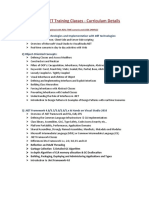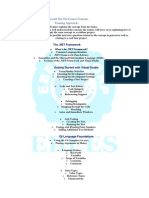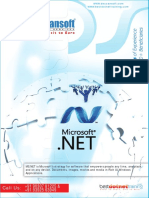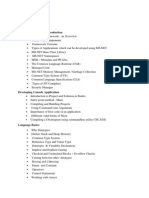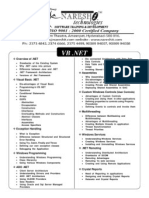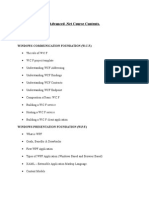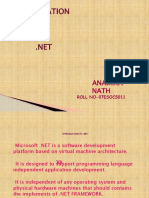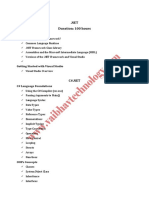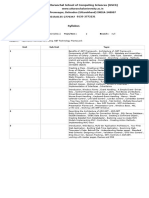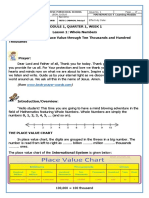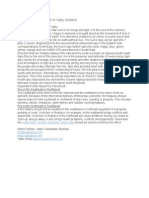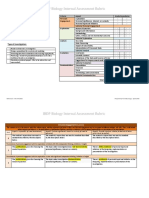0% found this document useful (0 votes)
283 views25 pagesMicrosoft .NET Training Modules
This document provides information about a C#.NET training course. The training teaches non-experienced people how to create applications using C#.NET and covers topics like the fundamentals of C# programming in Visual Studio, object-oriented programming, ADO.NET, XML, Windows forms, and deployment. The normal course duration is 60 working days with daily sessions lasting one and a half hours, while the fast track option is 40 working days with two-hour daily sessions. The only prerequisite is having no prior programming experience.
Uploaded by
S.k. LallCopyright
© © All Rights Reserved
We take content rights seriously. If you suspect this is your content, claim it here.
Available Formats
Download as PDF, TXT or read online on Scribd
0% found this document useful (0 votes)
283 views25 pagesMicrosoft .NET Training Modules
This document provides information about a C#.NET training course. The training teaches non-experienced people how to create applications using C#.NET and covers topics like the fundamentals of C# programming in Visual Studio, object-oriented programming, ADO.NET, XML, Windows forms, and deployment. The normal course duration is 60 working days with daily sessions lasting one and a half hours, while the fast track option is 40 working days with two-hour daily sessions. The only prerequisite is having no prior programming experience.
Uploaded by
S.k. LallCopyright
© © All Rights Reserved
We take content rights seriously. If you suspect this is your content, claim it here.
Available Formats
Download as PDF, TXT or read online on Scribd
/ 25



